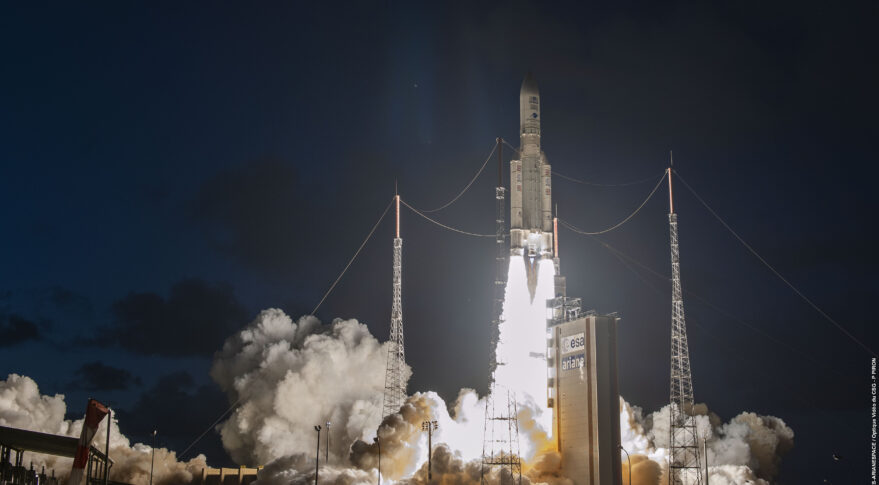
Ariane 5 launches Konnect VHTS satellite for Eutelsat (Image Credit: Space News)
HELSINKI — Arianespace launched the 6.5-ton Konnect VHTS satellite for Eutelsat Sept. 7 to improve broadband coverage in Europe.
The Ariane 5 lifted off from the European Space Port in Kourou, French Guiana, at 5:45 p.m. Eastern Wednesday. The satellite separated from the upper stage after 28 minutes and entered a sub-synchronous transfer orbit.
The Konnect Very High Throughput Satellite (VHTS) satellite has a mass of 6.4 metric tons and will provide a Ka-band throughput of 500 Gbps from its final position in geostationary orbit.
The 8.9-meter-tall satellite will deliver 230 beams for high-speed broadband and in-flight connectivity across Europe for operator Eutelsat, including isolated regions with low coverage.
Konnect VHTS was built by Thales Alenia Space and is based on an all-electric Spacebus NEO platform. It is the largest spacecraft so far built by the French-Italian firm.
The satellite features new antenna deployment and pointing mechanisms used within the antenna tracking system, as well as other innovative features including next-generation batteries and structural panels, all developed under the ESA Partnership Project, according to an ESA statement.
The payload includes the most powerful digital processor in the world, according to an Arianespace press release.
The satellite is designed to operate in orbit for at least 15 years and will undergo a period of testing before it enters commercial service.
The satellite had earlier expected to enter service in 2021 before pandemic-related issues delayed its delivery.
The delays affecting Konnect VHTS and Eutelsat 10B are expected to have “a mechanical effect on our expectations for subsequent years,” Eutelsat said in its Feb. 17 financial report.
The launch was the second Ariane 5 mission of 2022, following the launch in June of a pair of satellites to improve broadband coverage in the Asia-Pacific.
It is the 114th Ariane 5 launch overall since its first flight of the 50.5 meter-tall rocket in 1996. The rocket launched the James Webb Space Telescope in December last year.
Just three more Ariane 5 flights now remain, according to Arianespace, including ESA’s Jupiter Icy Moons Explorer, JUICE, in 2023, with an initial launch window opening in April.
The Ariane 6 will take the role as Europe’s heavy-lift launcher after the retirement of the Ariane 5.
The maiden flight of the Ariane 6 is currently slated for 2023 following a series of delays.








